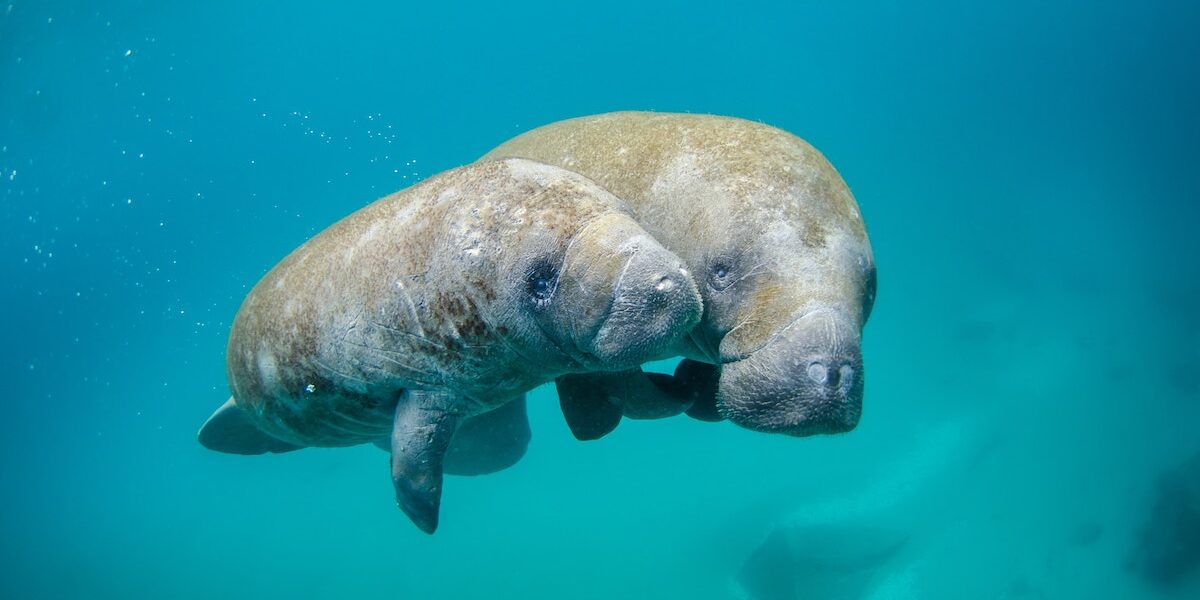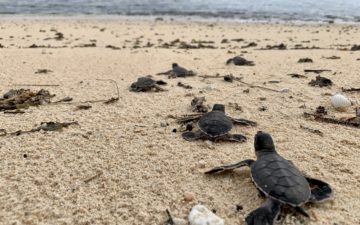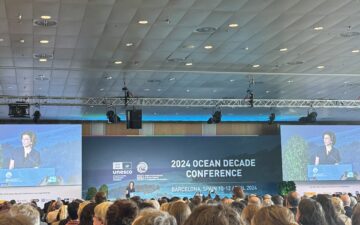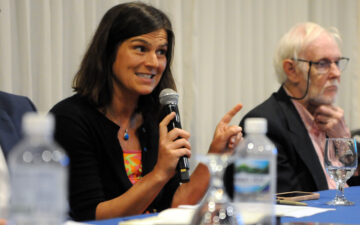By Mark J. Spalding, President, The Ocean Foundation
The room was alive with greetings and chatter as the participants gather for the first session. We were in the conference facility at Pacific Life for the 5th annual Southern California Marine Mammal Workshop. For many of the researchers, veterinarians, and policy specialists, this is the first time they had seen each other since last year. And others were new to the workshop, but not to the field, and they too found old friends. The workshop reached its maximum capacity of 175 participants, after starting with just 77 the first year.
The Ocean Foundation has been proud to co-host this event with the Pacific Life Foundation, and this workshop continues a fine tradition of offering opportunities to connect with other researchers, field practitioners on the beach and in the water with marine mammal rescue, and with the handful of those whose life work wraps around the policies and laws that protect marine mammals. Tennyson Oyler, the new President of the Pacific Life Foundation, opened the workshop and the learning began.
There was good news to be had. The harbor porpoise has returned to San Francisco Bay for the first time in nearly seven decades, monitored by researchers who take advantage of the daily gatherings of porpoises who feed near the Golden Gate Bridge during high tide. The unprecedented strandings of some 1600 young sea lion pups last spring seem unlikely to repeat themselves this year. New understanding of the annual aggregations of major migratory species such as great blue whales should support the formal process of requesting changes in shipping lanes into Los Angeles and San Francisco during the months they are there.
The afternoon panel focused on helping scientists and other marine mammal experts tell their stories effectively. The communications panel included people from diverse backgrounds in the field. The evening’s dinner speaker was the distinguished Dr. Bernd Würsig who with his wife has completed more research, mentored more students, and supported more efforts to broaden the field than most scientists have time, much less make the opportunity, to do.
Saturday was the day that turned our attention to an issue that is at the forefront of many discussions about the human relationship with marine mammals: the issue of whether marine mammals should be kept in captivity or bred for captivity, apart from those rescued animals who are too damaged to survive in the wild.
The lunch speaker teed up the afternoon’s sessions: Dr. Lori Marino from the Kimmela Center for Animal Advocacy and the Center for Ethics at Emory University, addressing the issue of whether marine mammals thrive in captivity. Her talk can be summarized in the following points, based on her research and experience that have led her to the overarching premise that cetaceans do not thrive in captivity. Why?
First, marine mammals are intelligent, self-aware and autonomous. They are socially independent and complex—they can choose favorites among their social group.
Second, marine mammals need to move; have a varied physical environment; exercise control over their lives and be part of a social infrastructure.
Third, captive marine mammals have a higher mortality rate. And, there has been NO improvement in over 20 years of experience in animal husbandry.
Fourth, whether in the wild or in captivity, the number one cause of death is infection, and in captivity, infection arises in part from poor dental health in captivity because of captivity-only behaviors that lead marine mammals to chew (or try to chew) on iron bars and concrete.
Fifth, marine mammals in captivity also show high levels of stress, which leads to immunosupression & early death.
Captive behavior is not natural to the animals. The kinds of behaviors forced by the training of marine animals to perform in shows seem to lead to the kinds of stressors that cause behavior that does not happen in the wild. For example there are no confirmed attacks on humans by orcas in the wild. Further, she argues that we are already moving towards better care and management of our relationship with other highly evolved mammals with complex social systems and migratory patterns. Fewer and fewer elephants are on display at zoos because of their need for greater space and social interaction. Most research laboratory networks have ceased experimentation on chimpanzees and other members of the monkey family.
Dr. Marino’s conclusion was that captivity does not work for marine mammals, especially dolphins and orcas. She quoted marine mammal expert Dr. Naomi Rose, who spoke later that day, saying, “the [perceived] rigors of the wild are not a justification for the conditions of captivity.”
The afternoon panel also addressed the issue of marine mammals in captivity, orcas and dolphins in particular. Those who believe that marine mammals should absolutely not be kept in captivity argue that it is time to stop captive breeding programs, develop a plan to reduce the number of animals in captivity, and to cease capture of animals for display or other purposes. They argue that the for-profit entertainment companies have a vested interest in promoting the idea that the performing and other display marine mammals can thrive with the proper care, stimulation, and environment. Likewise, the aquaria that are purchasing newly captured animals from wild populations far from the United States have such a vested interest, it is argued. It should be noted that those entities also contribute a great deal to the collective effort to help during marine mammal strandings, needed rescues, and basic research. Other defenders of the potential for true human-marine mammal connections point out that the pens of navy research dolphins are open at the far end from land. In theory, the dolphins can leave freely and they choose not to—the researchers who study them believe that the dolphins have made a clear choice.
Generally, there are broader areas of real agreement, despite some areas of disagreement about display, performance, and the value of captive research subjects. It is generally acknowledged that:
These animals are highly intelligent, complex animals with distinct personalities.
Not all species nor all individual animals are suited to display, which should lead to differential treatment (and perhaps release) as well.
Many rescued marine mammals in captivity could not survive in the wild because of the nature of the injuries that led to their rescue
We know things about the physiology of dolphins and other marine mammals because of captive research that we would not otherwise know.
The trend is towards fewer and fewer institutions having marine mammals on display in the United States and the European Union, and that trend is likely to continue, but is offset by growing collections of captive display animals in Asia.
There are best practices for keeping animals in captivity that ought to be standardized and replicated across all institutions and that the educational effort should be aggressive, and continuously updated as we learn more.
Plans should be underway at most institutions for an end to mandatory public performance by orcas, dolphins, and other marine mammals, because that is the likely demand of the public and the regulators who respond to them.
It would be foolish to pretend that both sides agree enough to get to easy resolution of the question of whether dolphins, orcas, and other marine mammals should be kept in captivity. Feelings run strongly about the value of captive research and public display in managing the human relationship with wild populations. Feelings run equally strongly about the incentives created by institutions purchasing wild caught animals, the profit motive for other institutions, and the pure ethical question about whether free-ranging intelligent wild animals should be held in small pens in social groups not of their own choosing, or worse, in solo captivity.
The outcome of the workshop discussion was clear: there is no one-size fits all solution that can be implemented. Perhaps, however, we can begin with where all sides agree and move to a place where the way in which we manage our research needs meshes with our understanding of the rights of our ocean neighbors. The annual marine mammal workshop has established the basis for mutual understanding even when marine mammal experts disagree. It is one of the many positive outcomes of the annual gathering in that we are thus enabled.
At The Ocean Foundation, we promote the protection and conservation of marine mammals and work to identify the best ways to manage the human relationship with these magnificent creatures to then share those solutions with the marine mammal community all over the world. Our Marine Mammal Fund is the best vehicle to support our efforts to do so.







